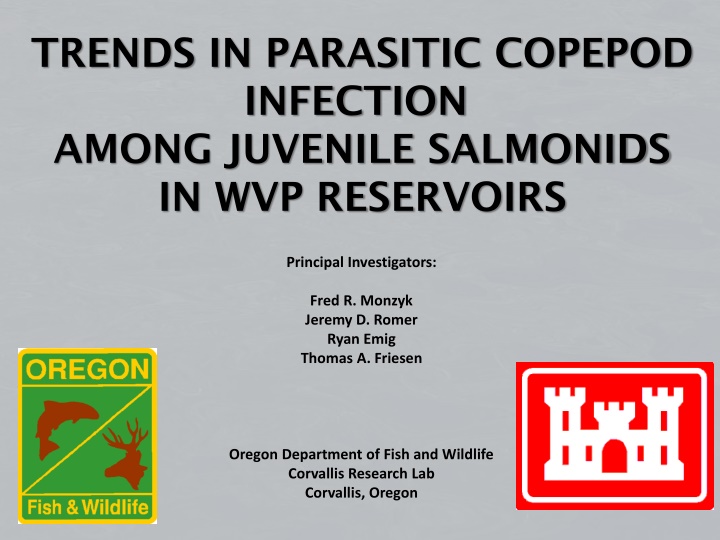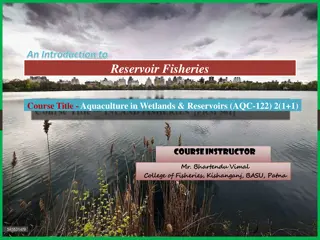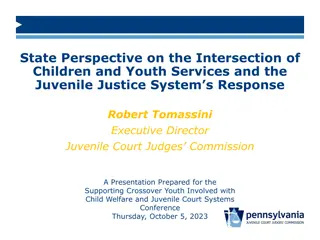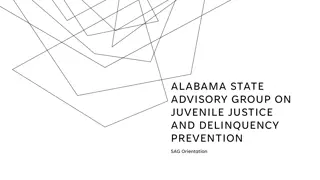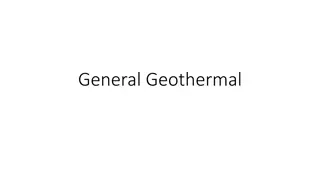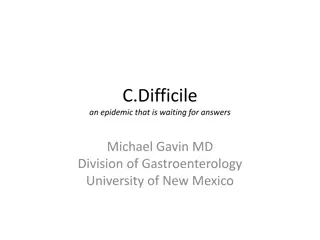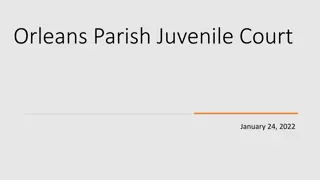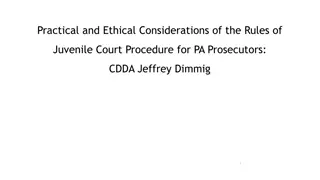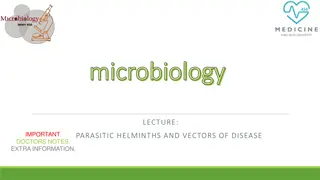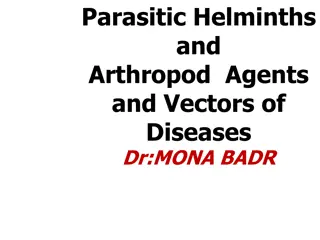Trends in Parasitic Copepod Infection Among Juvenile Salmonids in WVP Reservoirs Study
Study conducted by the Oregon Department of Fish and Wildlife researchers to investigate trends in parasitic copepod infection among juvenile salmonids in WVP reservoirs. The study focuses on the prevalence and intensity of infection on the gills, comparing infection levels between stream-rearing and reservoir-rearing Chinook, evaluating susceptibility to parasitic copepods among different Oncorhynchus species in reservoirs, and tracking changes in infection over time.
Download Presentation

Please find below an Image/Link to download the presentation.
The content on the website is provided AS IS for your information and personal use only. It may not be sold, licensed, or shared on other websites without obtaining consent from the author.If you encounter any issues during the download, it is possible that the publisher has removed the file from their server.
You are allowed to download the files provided on this website for personal or commercial use, subject to the condition that they are used lawfully. All files are the property of their respective owners.
The content on the website is provided AS IS for your information and personal use only. It may not be sold, licensed, or shared on other websites without obtaining consent from the author.
E N D
Presentation Transcript
TRENDS IN PARASITIC COPEPOD INFECTION AMONG JUVENILE SALMONIDS IN WVP RESERVOIRS Principal Investigators: Fred R. Monzyk Jeremy D. Romer Ryan Emig Thomas A. Friesen Oregon Department of Fish and Wildlife Corvallis Research Lab Corvallis, Oregon
Background Salmincola californiensis only infect Oncorhynchus spp. Endemic to PNW freshwater habitats Can cause physical damage to gill structure/mortality Incidence of infection tends to increase with fish size Life Cycle Copepodid Chalimus stages (1-4) Adult Eggs Infectous free- swimming stage (live for ~2 d) Re-attaches to tissue (4 -14 d) Can produce 2 broods 28-32 d to hatch
Objectives Compare infection levels between stream-rearing and reservoir-rearing Chinook Compare susceptibility to parasitic copepods among Oncorhynchus species in reservoirs Evaluate changes in infection through time Prevalence and Intensity on gills
Methods All fish collected were examined macroscopically for copepods on gills and fins Counted copepods on subsample of fish Screw traps, gill nets, electrofishing, seining Detroit, Foster, Cougar, Lookout Point, and Fall Creek (USACE)
Results Infection Prevalence much greater in reservoirs compared to streams Subyearling Chinook 2012-2013 100 Cougar Reservoir Detroit Reservoir Lookout Pt. Reservoir M.F. Willamette N. Santiam S.F. McKenzie 80 Prevalence (%) Attached to gills Reservoirs: 80% 60 40 Streams: 19% 20 0 May Jun Jul Aug Sep Oct Nov Dec Month
Results Chinook are more vulnerable to infection Factors could be habitat, behavioral (feeding, schooling), or evolutionary (immunity) Detroit 2012-2013 96% 100 Chinook, age 0 Kokanee, age 0 Rainbow trout, age 1 80 Prevalence (%) 60 40 28% 20 1% 0 Jun Jul Aug Sep Oct Nov Dec Month
Results Subyearling Chinook in Nov-Dec 0.30 2012 Cougar Detroit LOP Fall Cr 0.25 0.20 16-24% of Fall Creek Chinook >20 copepods 85% mortality during saltwater transition (Pawaputanon 1980) 0.15 0.10 Proportion of Chinook 0.05 0.00 + 0 5 10 15 20 0.30 2013 0.25 0.20 0.15 0.10 0.05 0.00 + 0 5 10 15 20 Number of copepods on gills
Results Fall (Nov-Dec) 100 Late arriving adults released @ Gold Creek 95 90 Prevalence (%) Cougar 2012 Cougar 2013 Cougar 2014 Detroit 2012 Detroit 2013 Detroit 2014 Fall Creek 2012 Fall Creek 2013 Fall Creek 2014 Lookout Pt 2012 Lookout Pt 2013 Lookout Pt 2014 85 Infected adults 80 Fall Creek Steelhead and Chinook adults (Mar-Sep) Released near or in reservoir 75 70 0 2 4 6 8 10 12 14 16 Mean intensity Lookout Point Chinook release >30km above reservoir Lower infection levels in Lookout Point Higher infection levels in Fall Creek Reservoir
What can be done? Don t release infected adults near reservoir o Not feasible in many WVPs Treat adults prior to transporting o Ivermectin gavage (Johnson and Heindel 2001)-IDFG Individual fish handled at least twice Infected adults o H2O2 (Hydrogen peroxide) Design Fall Creek AFF with holding pool and bioswale/settling pond o Possible added benefit of < PSM Resolve necrosis of gill tissue
Acknowledgments Jeff Ziller Kelly Reis Doug Garletts Chad Helms Greg Taylor Todd Pierce Nat Erickson Terri Berling Rich Piaskowski The Reservoir Dogs Khoury Hickman Chris Abbes Andrew Nordick Greg Gilham Meghan Horne-Brine John Elliott Kevin Stertz Ryan Flaherty JD Hansen
0.30 2014 Cougar14 Detroit14 LOP14 Fall Cr14 0.25 Proportion of Chinook 0.20 0.15 0.10 0.05 0.00 0 5 10 15 20 Number of copepods on gills
